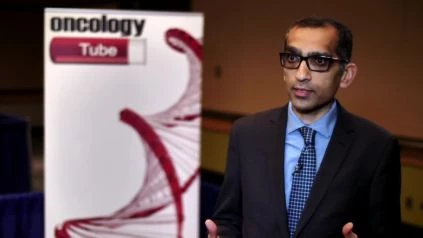Dr. Mehool Patel dicusses how artificial intelligence makes an impact on decisions for both clinicians and patients alike.
Background:
Next generation sequencing (NGS) in hematological tumors is increasingly shaping clinical treatment decisions at the point of care. While the impact of NGS panels in solid tumors is largely therapeutic, targeted sequencing in hematological tumors can additionally provide diagnostic and prognostic insights. Additional data generated in hematological tumor sequencing makes manual interpretation and annotation of variants tedious and non-scalable. In this study we compared hematological tumor variant interpretation using an artificial intelligence decision-support system, Watsonä for Genomics (WfG), with expert guided manual curation.
Methods:
Patients with hematological tumors at Hallym University, College of Medicine between December 2017 and December 2018, were sequenced using the 54 gene Illumina TruSight Myeloid Panel. WfG interpreted and annotated all patients sequencing results, a subset of which were assessed manually to ascertain concordance.
Results:
54 South Korean patients with hematological malignancies were analyzed (23 Acute Myeloid Leukemia, 12 myeloproliferative neoplasm, 5 myelodysplastic syndrome, 5 multiple myeloma and 9 others). Comparison of manual and WfG interpretation of 10 randomly selected cases yielded 90% (9/10) concordance and identification of 9 clinically actionable variants (33%) not found in manual interpretation. In total, WfG identified that 71% (38/54) of all cases had at least one clinically actionable therapeutic alteration (a variant targeted by a US FDA approved drug, off-label drug, or clinical trial). 33% (18/54) of cases had genes that were targeted by a US FDA approved therapy including JAK2, IDH1, IDH2, and FLT3. In cases without therapeutic alterations, WfG identified diagnostic or prognostic insights in an additional 20% (11/54) of patients. 9% (5/54) had no clinically actionable information.
Conclusions:
WfG variant interpretation correlated well with manually curated expert opinion and identified clinically actionable insights missed by manual interpretation. WfG has obviated the need for labor-intensive manual curation of clinical trials and therapy, enabling our center to exponentially scale our NGS operations.

